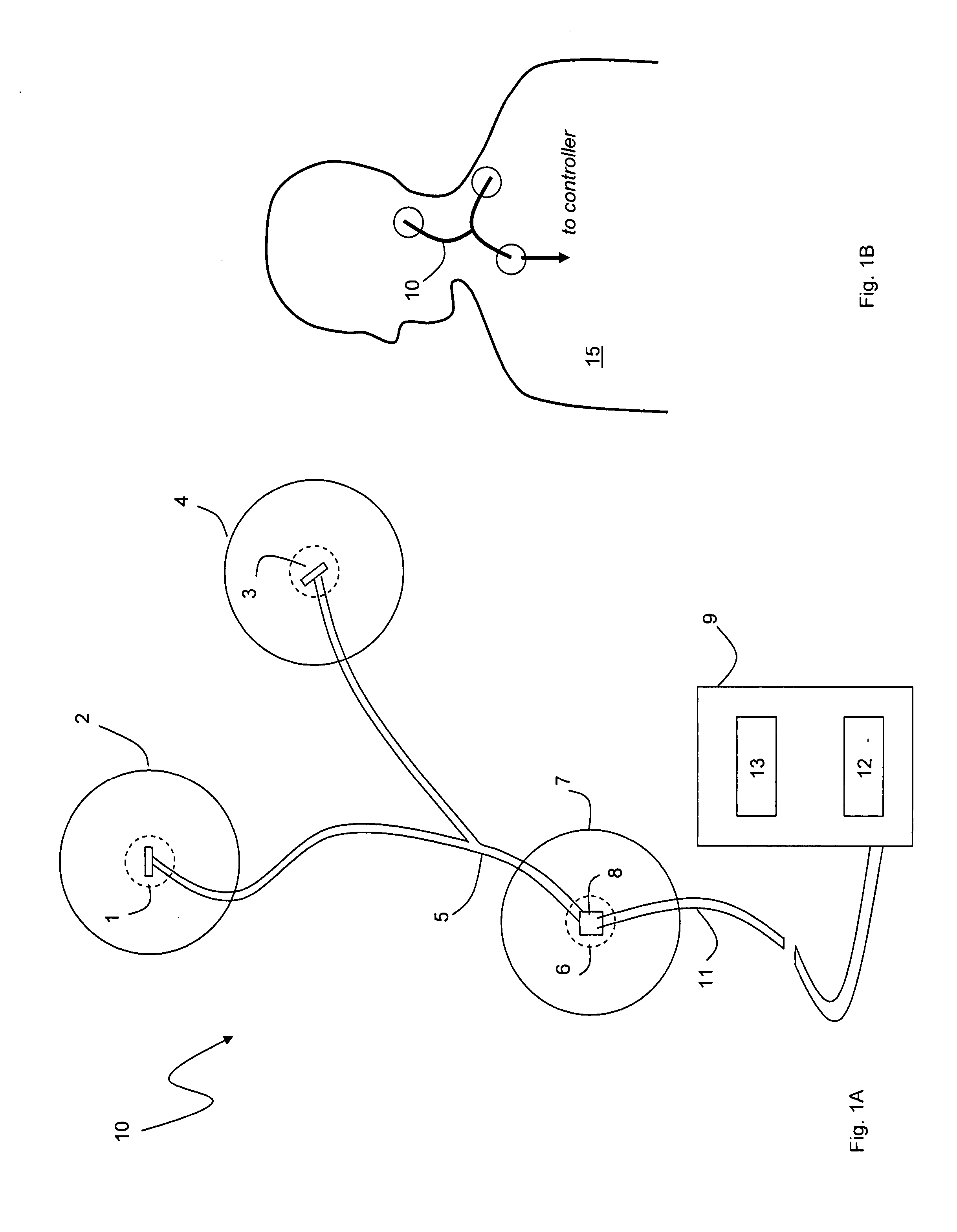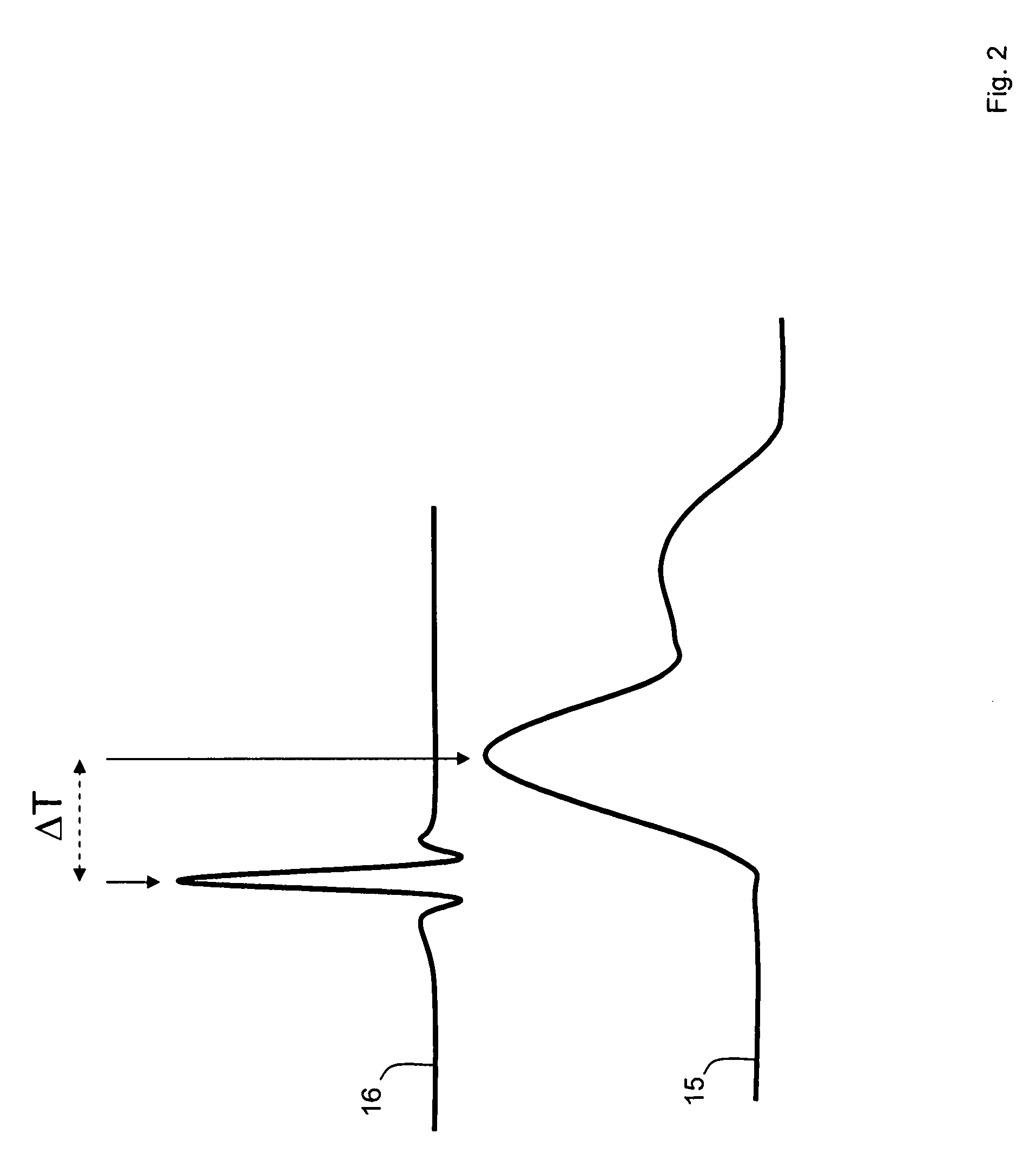Patch sensor system for measuring vital signs
a sensor system and vital sign technology, applied in the field of blood pressure, can solve the problems of motion-related artifacts, reduce the accuracy of measurement, white coat syndrome, etc., and achieve the effect of being easily worn
- Summary
- Abstract
- Description
- Claims
- Application Information
AI Technical Summary
Benefits of technology
Problems solved by technology
Method used
Image
Examples
Embodiment Construction
[0035]FIGS. 1A and 1B show an adhesive patch sensor system 10 according to the invention that features primary 1 and reference 3 electrodes and an optical system 6 operating in concert as described below to measure vital signs from a patient 15. The electrodes 1, 3 and optical sensor 6 each attach to the patient's skin using a separate adhesive pad 2, 4, 7, and connect to each other using a Y-shaped cable 5. During operation, the primary 1 and reference 3 electrodes detect electrical impulses, similar to those used to generate a conventional ECG, from the patient's skin. Each heartbeat generates a unique set of electrical impulses. Concurrently, the optical system 6 measures an optical waveform by detecting a time-dependent volumetric change in an underlying artery caused by blood flow following each heartbeat. The optical waveform is similar to an optical plethysmograph measured by a pulse oximeter. A circuit board 8 (described with reference to FIG. 3) attached to the optical syst...
PUM
 Login to View More
Login to View More Abstract
Description
Claims
Application Information
 Login to View More
Login to View More - R&D
- Intellectual Property
- Life Sciences
- Materials
- Tech Scout
- Unparalleled Data Quality
- Higher Quality Content
- 60% Fewer Hallucinations
Browse by: Latest US Patents, China's latest patents, Technical Efficacy Thesaurus, Application Domain, Technology Topic, Popular Technical Reports.
© 2025 PatSnap. All rights reserved.Legal|Privacy policy|Modern Slavery Act Transparency Statement|Sitemap|About US| Contact US: help@patsnap.com



